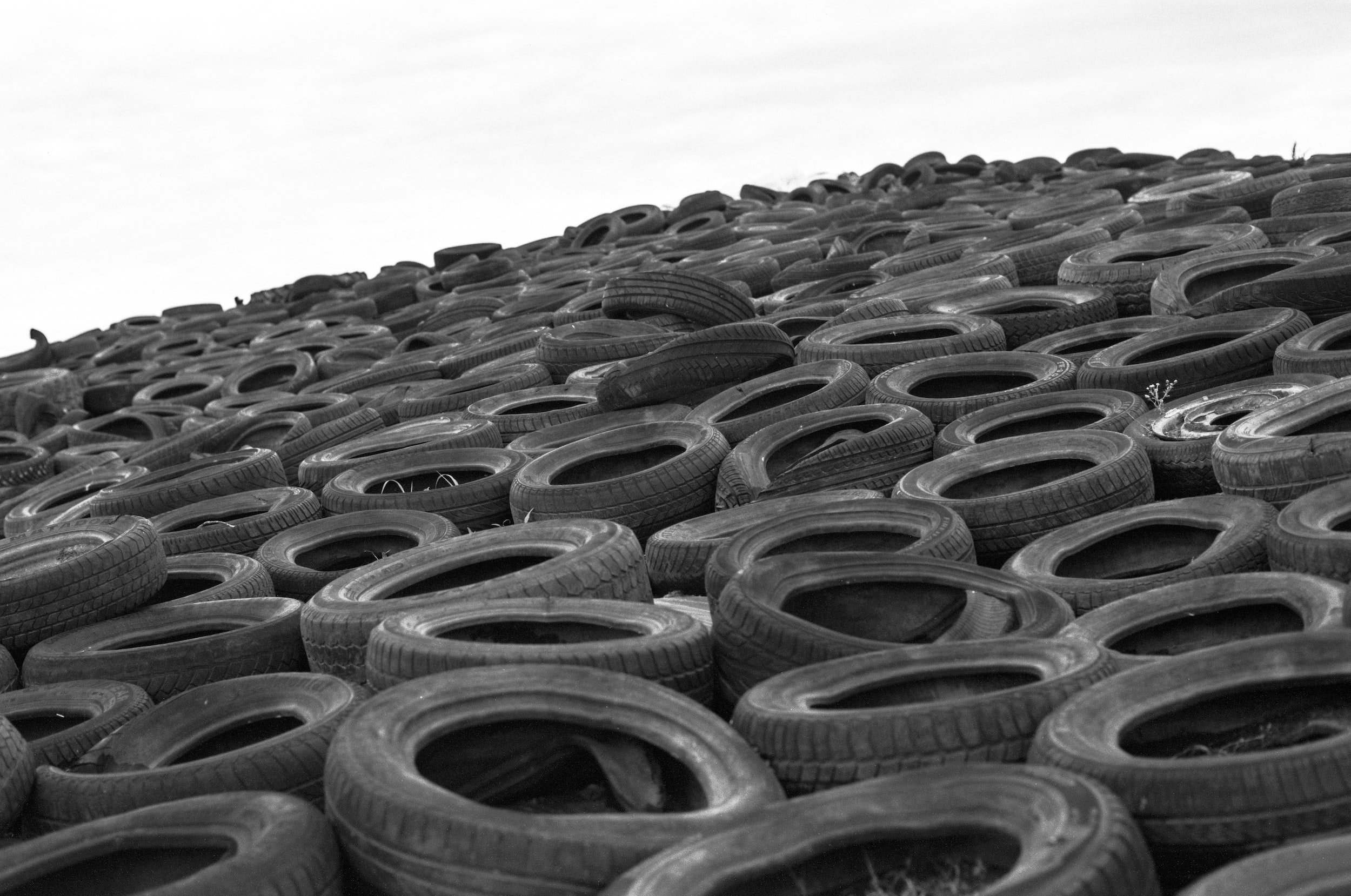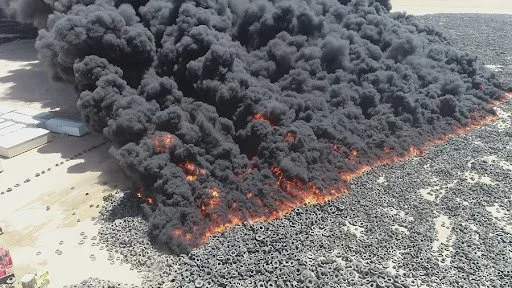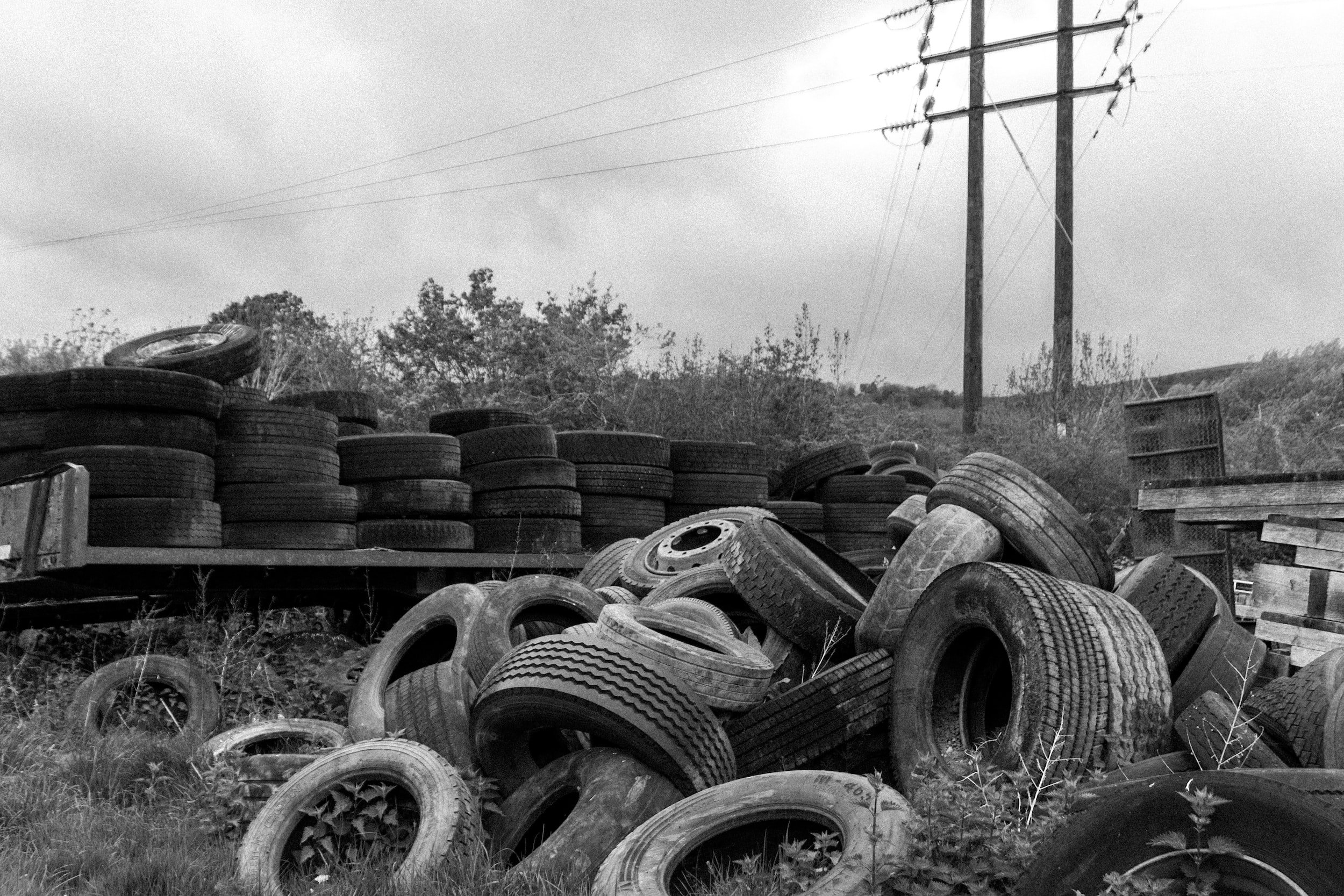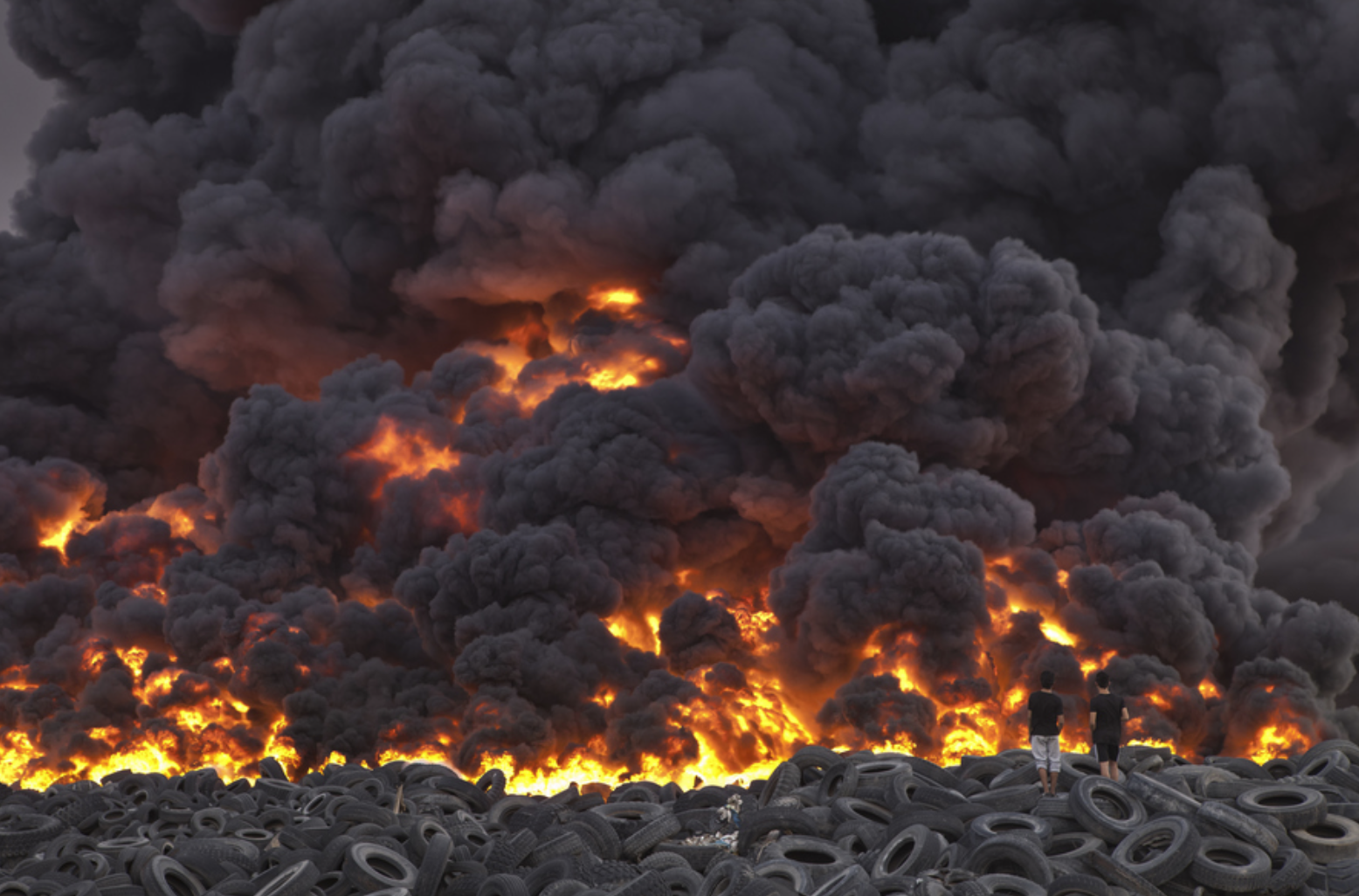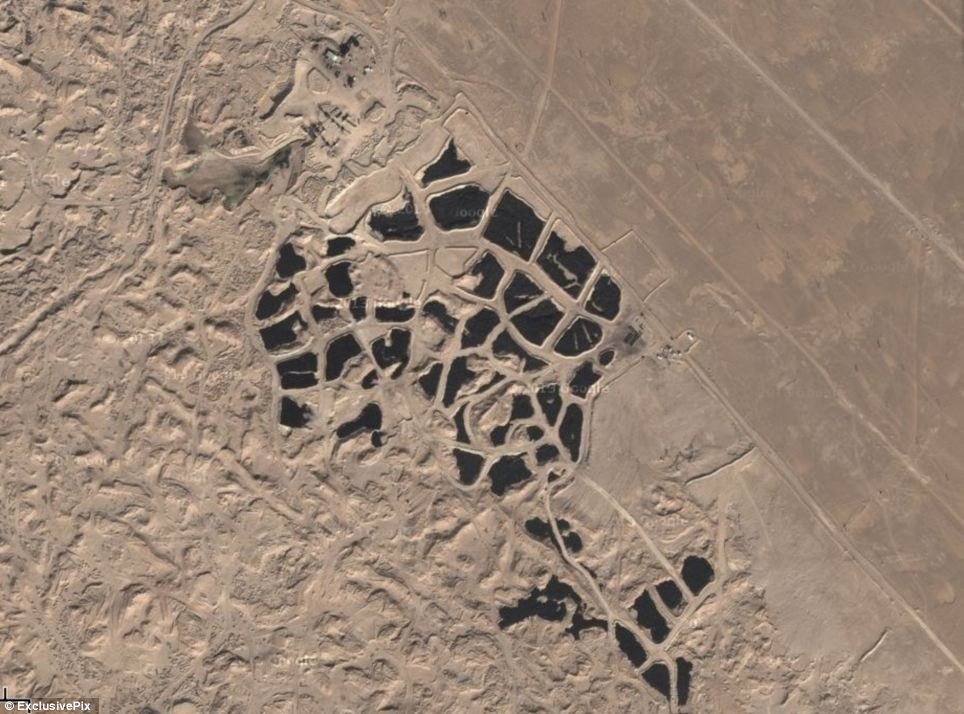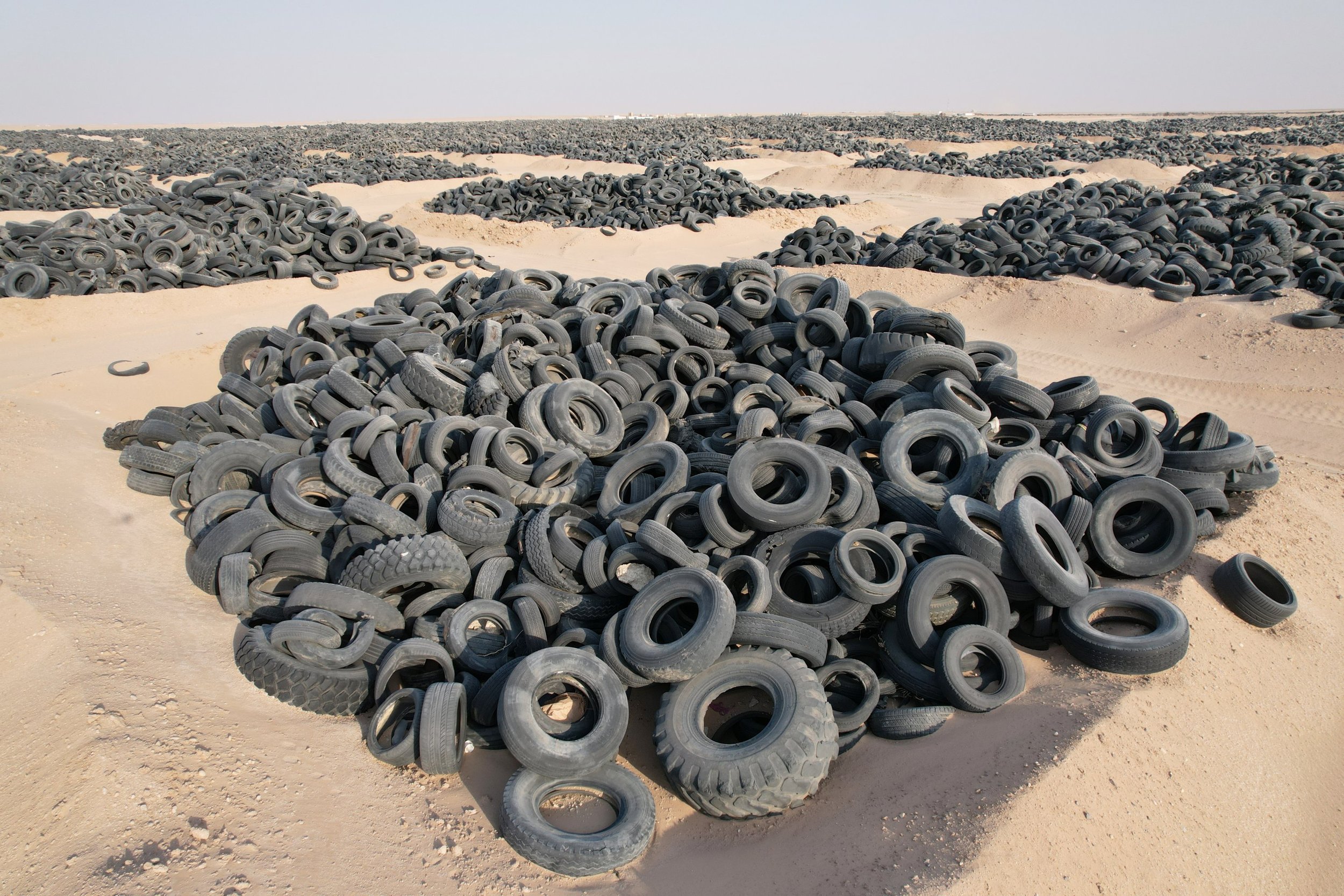From Tyre Graveyard to Circular Economy
Start Date: Early 2024
Timeframe: 8 to 12 years
Budget: $6 billion |
Start Date: Early 2024 Timeframe: 8 to 12 years Budget: $6 billion |
Each year, gigantic holes are dug out of the earth and filled with old tyres. The size of these holes is so large that they can be seen from space. The bulky composition of tyres makes them incredibly hard to dispose of, making them a major environmental problem worldwide. To Do:
Fire preventionRecycling and reuseSoil decontamination and treatmentHealth services to locally affected communitiesTraining and educationInfrastructure developmentGovernment advocacy
Tyre graveyards contain thousands of tonnes of rubber, which when exposed to the sun begin to break down and release carcinogenic gases that are harmful to humans and the environment. Dioxins, for example, are released when synthetic rubber compounds combust, even at low temperatures.Scrap tyres are an unexpected source of micro plastics source when dumped in waterways. They produce noxious dust as they degrade. They become a breeding ground for mosquitos as they collect water presenting major health issues such as malaria.
Due to the volume of rubber, fires break out. The health impacts due to these fires include the irritation of skin, eyes, mucous membranes, central nervous system depression, respiratory effects and cancer. The fumes created have a massive impact on the environment itself.There are an estimated 42 million tyres that have been dumped in Kuwait alone. The tyres are both from Kuwait and other countries that paid for them to be taken away.
